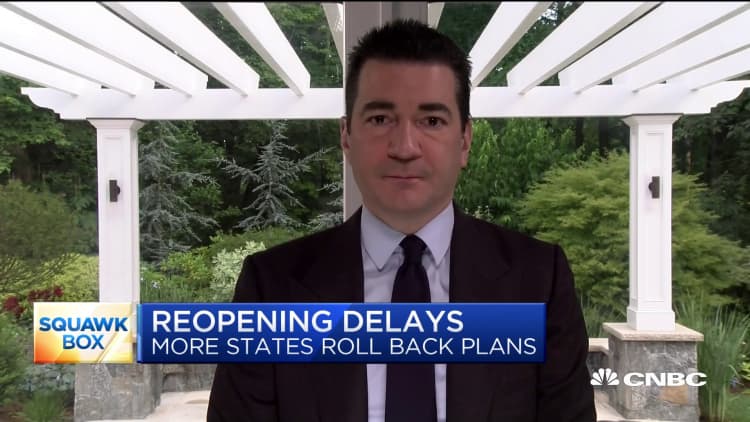The number of confirmed U.S. deaths due to the coronavirus is substantially lower than the true tally, according to a study published Wednesday in JAMA Internal Medicine.
Using National Center for Health Statistics data, researchers at Yale University compared the number of excess U.S. deaths from any causes with the reported number of weekly U.S. Covid-19 deaths from March 1 through May 30. The numbers were then compared with deaths from the same period in previous years.

Researchers found that the excess number of deaths over normal levels also exceeded those attributed to Covid-19, leading them to conclude that many of those fatalities were likely caused by the coronavirus but not confirmed. State reporting discrepancies and a sharp increase in U.S. deaths amid a pandemic suggest the number of Covid-19 fatalities is undercounted, they said.
"Our analyses suggest that the official tally of deaths due to Covid-19 represent a substantial undercount of the true burden," Dan Weinberger, an epidemiologist at Yale School of Public Health and a lead author of the study, told CNBC. Weinberger said other factors could contribute to the increase in deaths, such as people avoiding emergency treatment for things like heart attacks. However, he doesn't think that is the main driver.
The study was supported by the National Institute of Health.
The 781,000 total deaths in the United States in the three months through May 30 were about 122,300, or nearly 19% higher, than what would normally be expected, according to the researchers. Of the 122,300 excess deaths, 95,235 were attributed to Covid-19, they said. Most of the rest of the excess deaths, researchers said, were likely related to or directly caused by the coronavirus.
Covid-19 affects nearly every system in the body, including the circulatory system, leading to an uptick in heart attacks and strokes that physicians now believe were indirectly caused by the virus.
The number of excess deaths from any causes were 28% higher than the official tally of U.S. Covid-19 deaths during those months. The researchers noted the increase in excess deaths in many states trailed an increase in outpatient visits from people reporting an "influenza-like illness."

The report comes as the coronavirus continues to rapidly spread across the United States. New cases in the U.S. grew by 5% or more in at least 40 states, based on a seven-day average, including Arizona, Texas, Florida and Oklahoma as of Monday, according to a CNBC analysis of data compiled by Johns Hopkins University. At least 127,425 have died in the United States, according to Hopkins data.
The researchers noted the gap between the reported coronavirus deaths and the excess deaths varied by states. For example, California reported 4,046 Covid-19 deaths and 6,800 excess deaths, leaving 41% of the excess deaths unattributed to Covid-19 they said.
Texas and Arizona had wider gaps, with roughly 55% and 53%, respectively, of excess deaths unattributed to Covid-19.
The researchers said some of the discrepancies could be related to the intensity and timing of increases in testing.



